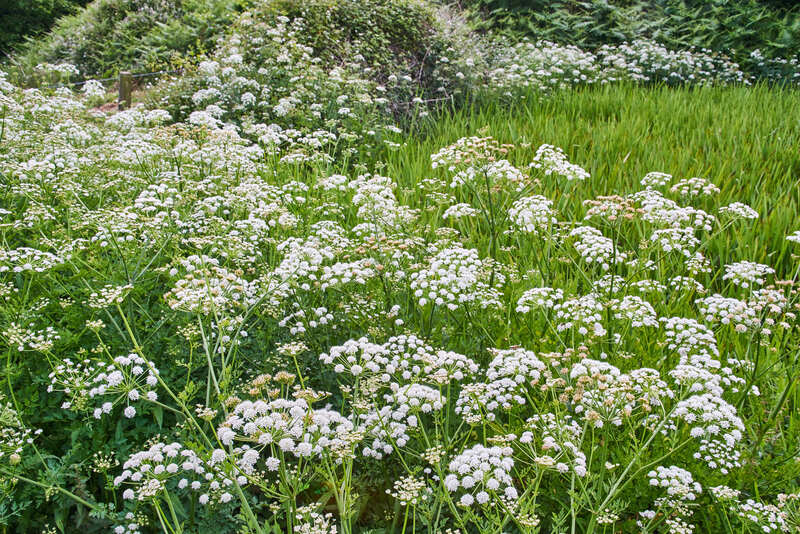Revamp Shady Corners with Evergreen Climbing Plants
Posted on 15/05/2025
Revamp Shady Corners with Evergreen Climbing Plants
Incorporating evergreen climbing plants into your garden design can transform even the dreariest of shady corners into a lush, vibrant space. Evergreen climbers not only add a touch of greenery throughout the year but also enhance the aesthetic appeal of your outdoor areas by adding texture and visual interest. In this article, we'll explore a variety of evergreen climbing plants suitable for shady spots, discuss their benefits, and offer tips on how to care for them.
The Magic of Evergreen Climbers in Shady Areas
When it comes to gardening, shady areas often pose a challenge. However, with the right selection, climbing plants can thrive in these conditions, filling those once-empty spaces with an abundance of foliage and, sometimes, colorful blooms. Here are some reasons why they work so well:
- Year-Round Interest: Unlike deciduous plants, evergreens maintain their foliage throughout the year, ensuring that your garden looks lively and green even in the depths of winter.
- Space Savers: Vertical growth allows you to maximize the use of space, which is especially valuable in small gardens or urban settings.
- Shade Tolerance: While some evergreens prefer sunny conditions, many can adapt to or even thrive in shade, making them perfect for underused areas of the garden.
- Diversity: There is a wide range of evergreen climbing plants available, offering different colors, textures, and growth habits to suit your design preferences.
Top Evergreen Climbing Plants for Shady Corners
Here's a selection of delightful evergreen climbers that excel in shady environments.
Ivy (Hedera helix)
Perhaps the most well-known of all climbers, ivy is incredibly versatile and hardy. It attaches itself to almost any surface, creating a beautiful, green tapestry. Ivy is low-maintenance and can help control erosion on slopes.
Climbing Hydrangea (Hydrangea anomala subsp. petiolaris)
This climbing hydrangea is perfect for shady walls. It offers not only evergreen foliage but also clusters of lacy white flowers in the spring and summer. While it may take some time to establish, it can eventually grow up to 60 feet, covering large areas efficiently.
Clematis armandii
A stunning evergreen climber, Clematis armandii is perfect for adding a touch of elegance to shady corners. With its leathery dark green leaves and fragrant white flowers, it can create a stunning display. This climber prefers a sheltered spot where it can enjoy protection from harsh winds.
Pyracantha (Firethorn)
Pyracantha is an excellent choice if you want an evergreen climber that offers more than just lush foliage. It produces vibrant orange or red berries and small white flowers, offering all-season interest. These plants can grow in shaded areas and make excellent natural barriers.
Holboellia (Waxtree or Sausage Vine)
This lesser-known climber is a gem in shaded gardens. Holboellia provides a tropical touch with its leathery leaves and fragrant lilac flowers, followed by sausage-shaped fruits. It is perfect for shady walls or trellises.
Expert Tips on Caring for Evergreen Climbers
To ensure that your shady corner climbing plants flourish, follow these expert tips:
- Soil Preparation: While most of these plants are hardy, they perform best in well-drained soil enriched with organic matter to encourage strong, healthy growth.
- Watering: Initially, they require consistent watering to establish their roots. Once established, they generally withstand periods of dryness, but don't let the soil completely dry out.
- Pruning: Regular pruning helps maintain the desired shape and prevents climbers from becoming unruly. It's best to prune in late winter or early spring, depending on the species.
- Support: Most climbers benefit from sturdy supports like trellises or wires. Ensure they have something to cling to as they grow.
- Mulching: Apply a layer of mulch around the base of your plant to retain moisture and regulate soil temperature.
Design Ideas for Using Evergreen Climbers
Here are some creative ways to integrate evergreen climbing plants into your shady garden spaces:
- Living Wall: Use climbing plants to create a living wall, providing a natural privacy screen or reducing noise and air pollution in urban areas.
- Arbors and Pergolas: Create beautiful garden structures by covering arbors and pergolas with climbing foliage, enhancing outdoor relaxation spaces.
- Shady Trellises: Add vertical interest with trellises against walls. This setup is perfect for climbers like Clematis and Ivy.
- Fences and Screens: Conceal unsightly fences or walls with a layer of greenery, instantly transforming the space.
- Garden Art: With a bit of imagination, climbers can be trained into topiary, adding sculptural elements to the landscape.
The Eco-Friendly Choice
Using evergreen climbers for shady corners is not just an aesthetic choice; it's also environmentally friendly. These plants help capture carbon dioxide, improve air quality, and create natural habitats for wildlife. Furthermore, the shade provided by climbers can help regulate temperature, making it a sustainable solution for garden design.
Conclusion
Transforming shady corners of your garden with evergreen climbing plants is an excellent solution for adding year-round attractiveness, improving biodiversity, and making a positive environmental impact. Whether you choose Ivy, Climbing Hydrangea, or another hardy climber, your efforts can turn drab garden areas into vibrant green sanctuaries. Embrace the versatility and beauty of evergreen climbers and watch your garden thrive.





